Saturday 1 July 2017
What an enormous residence aka Palace !! It was too much to get into one image, so I have used an image from Wikipedia taken by By Rainer Lippert.
The former residence of the Würzburg prince-bishops is one of the most important baroque palaces in Europe. It was begun for Prince-Bishop Johann Philipp Franz von Schönborn by the then young and unknown architect Balthasar Neumann (1687-1753); the shell of the palace was built from 1720 to 1744 and the interior completed in 1780. On 16 March 1945, only a few weeks before the end of the Second World War, an air raid destroyed 90 percent of the Würzburg old town. The Residence was almost completely burnt out. From the attic the fire ate down through wooden ceilings and floors, and all the furnishings and wall panelling were devoured by the flames. Only the core of the Residence, the vestibule, Garden Hall, White Hall, staircase and Imperial Hall with Tiepolo’s frescos were saved. Neumann’s stone vaults withstood the collapse of the burning attic. The rebuilding of the Residence, which cost around 20 million euros, is now complete.

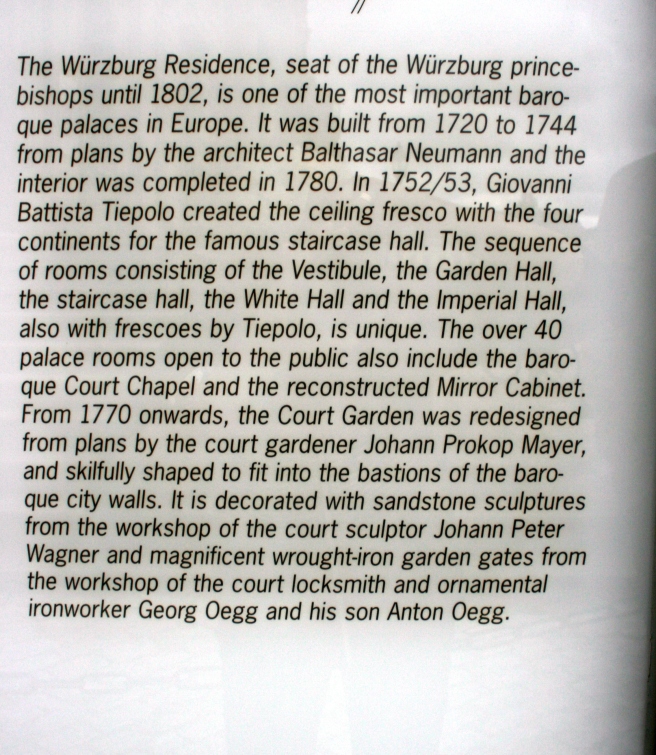
A model of the Residence. Several historical sites I visited had similar models. Some had Braille writing and I guess sight impaired people could touch the model to understand the layout of the buildings.
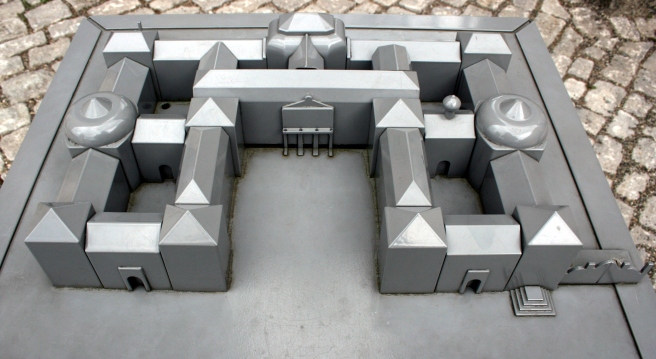
The fountain steps provided a welcome chance to get the weight off my feet for a minute or so.
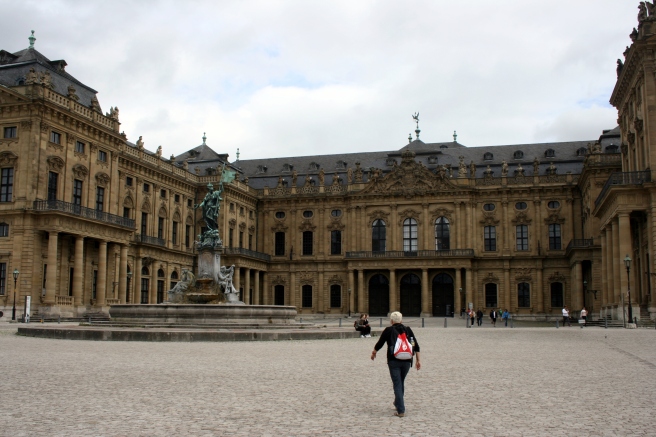
Actually I was here for more than a few minutes. I needed to absorb everything around me. The fountain was built in 1894 by Ferdinand von Miller to honor the Prince Regent Luitpold from Bavaria.
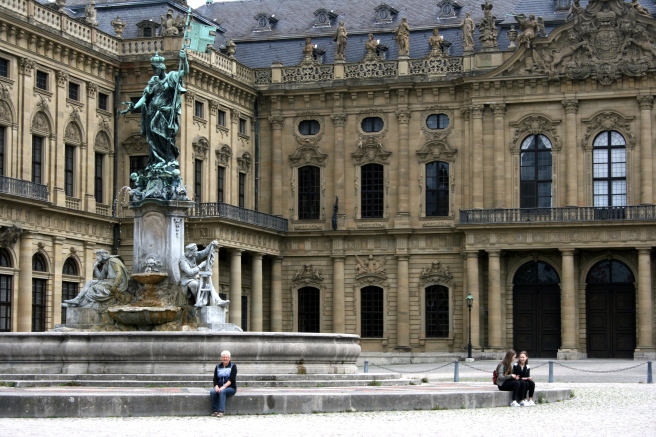
Prince Regent Luitpold did not want any memorial, so the Franconia Fountain was sculpted instead and is supposed to symbolise Franconia, holding the Franconia storm flag in one hand and a laurel wreath in the other.
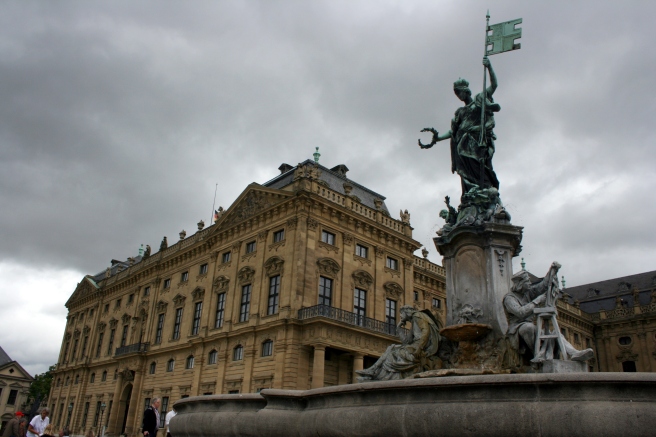
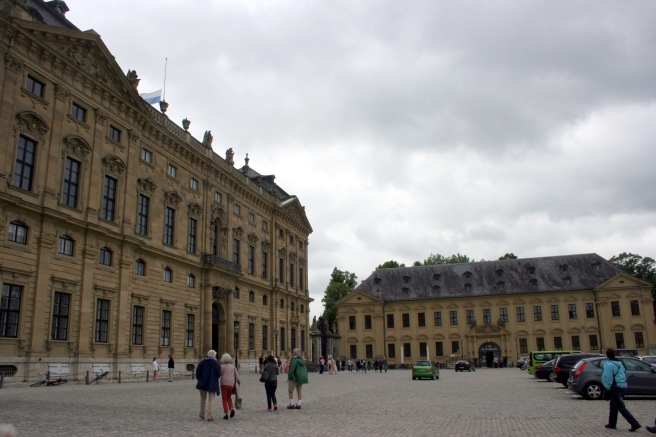
From the steps of the fountain I could see the Marinenber Fortress in the far distance.

Other spires made their presence on the skyline too.

This restaurant was a popular spot for many.
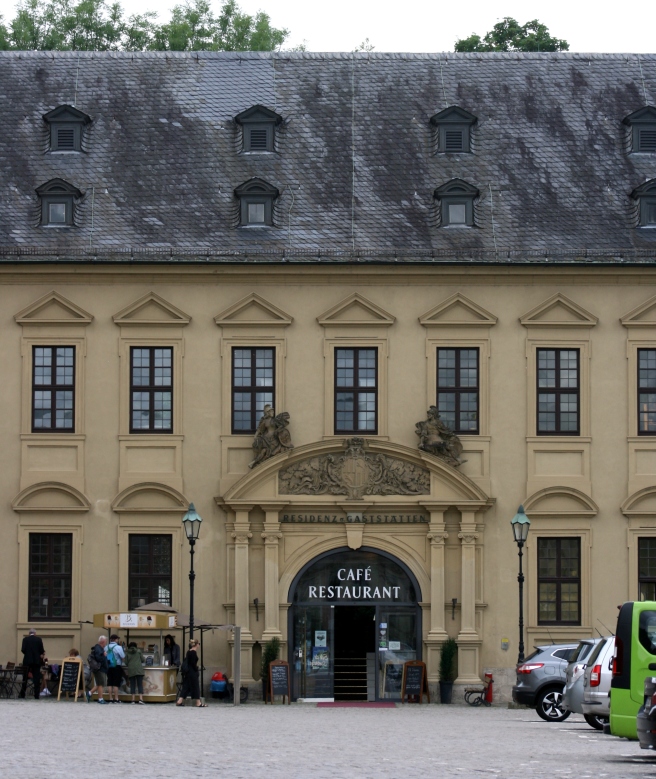
We chose not to take a tour inside The Residence. There was plenty to look at outdoors. The entrance gate was very ornate.
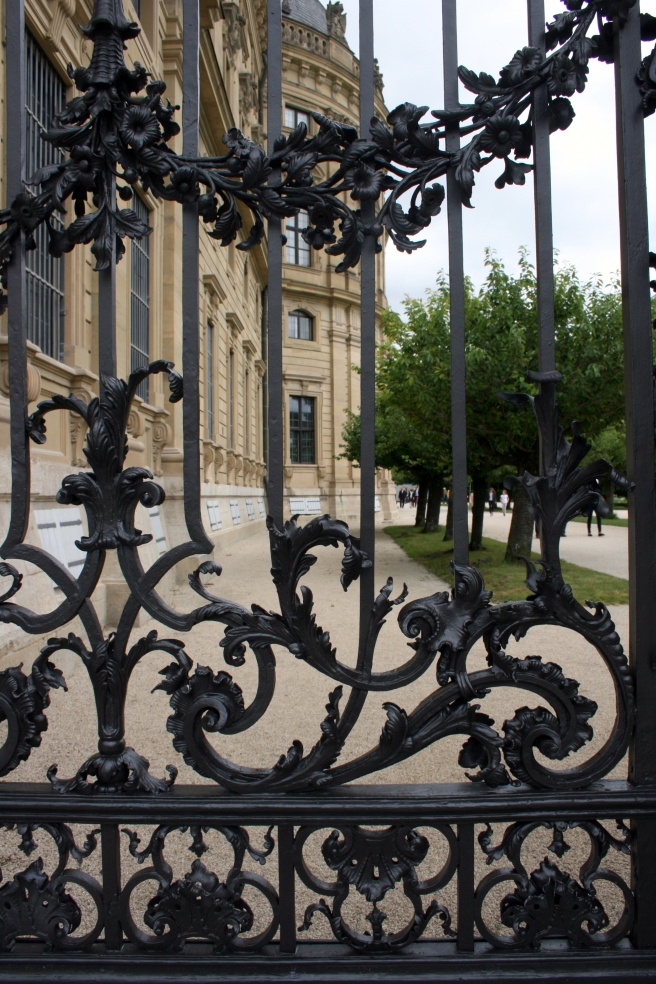
The gardens looked beautiful.
As you can see, the trees have been trimmed nicely into shapes and the grass is neat and tidy.
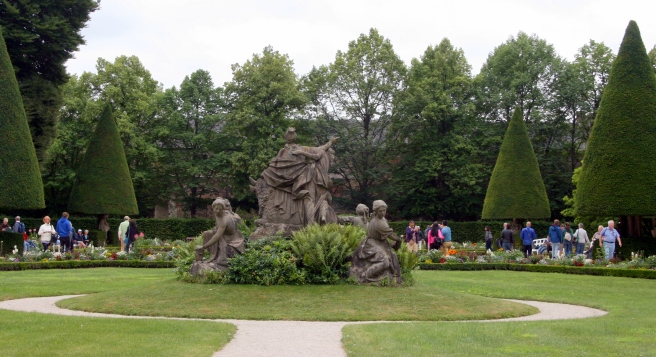
This particular tree looked like it is trying to be different from the others. I think it has successfully done that 🙂
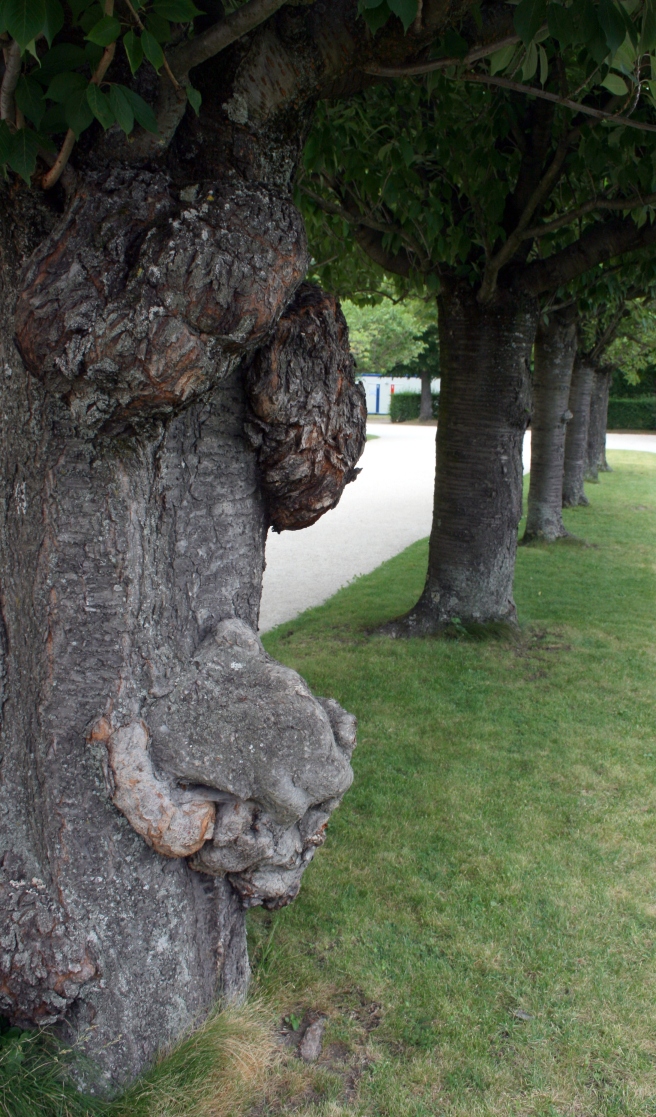
The statues were in a worn state. I’ve seen so many statues and haven’t really given much in-depth thought to them. They really are artworks, subjected to the weather. The artists were very skilled and creative. I wonder if they ever thought how long they might last? Did they have models for them?
The gardens were the perfect wedding photo backdrop and we spotted a couple of weddings taking advantage of this.
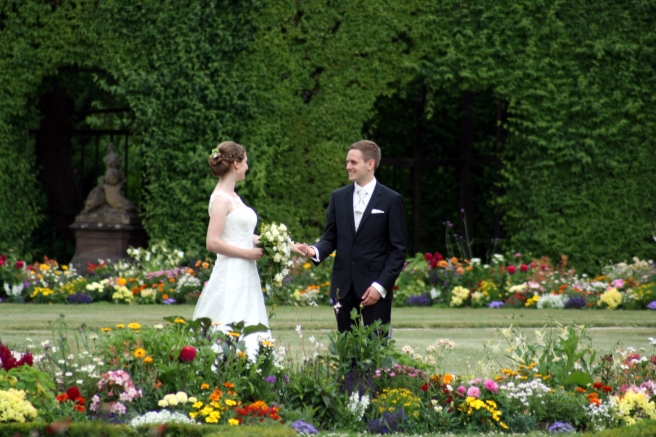
I so would love to be able to “flashback” a few hundred years to witness those alive at that time going about their daily business. People of that era certainly appreciated gardens of beauty, statues and other artworks including oil paintings some of which I’ve seen in museums. They are enormous pieces of work with intricate detail and scaled to perfection. I bet the artists never envisaged these being an important record of the time at which they lived.
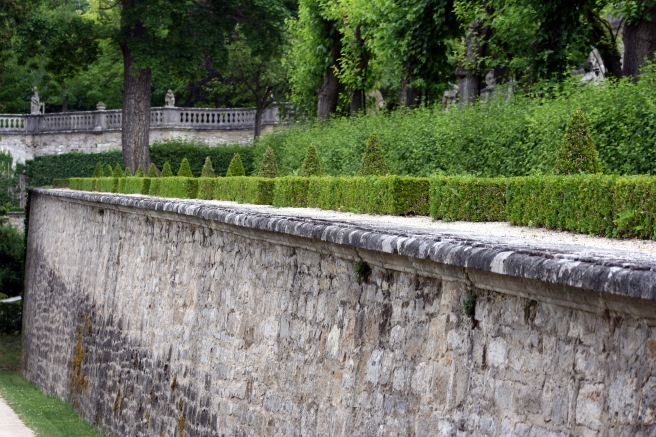

This a full view of The Residence from the gardens. Once again, I have used an image by Rainer Lippert on the Wikipedia page.

This living tree is hollow. It has quite a few solid poles supporting it.


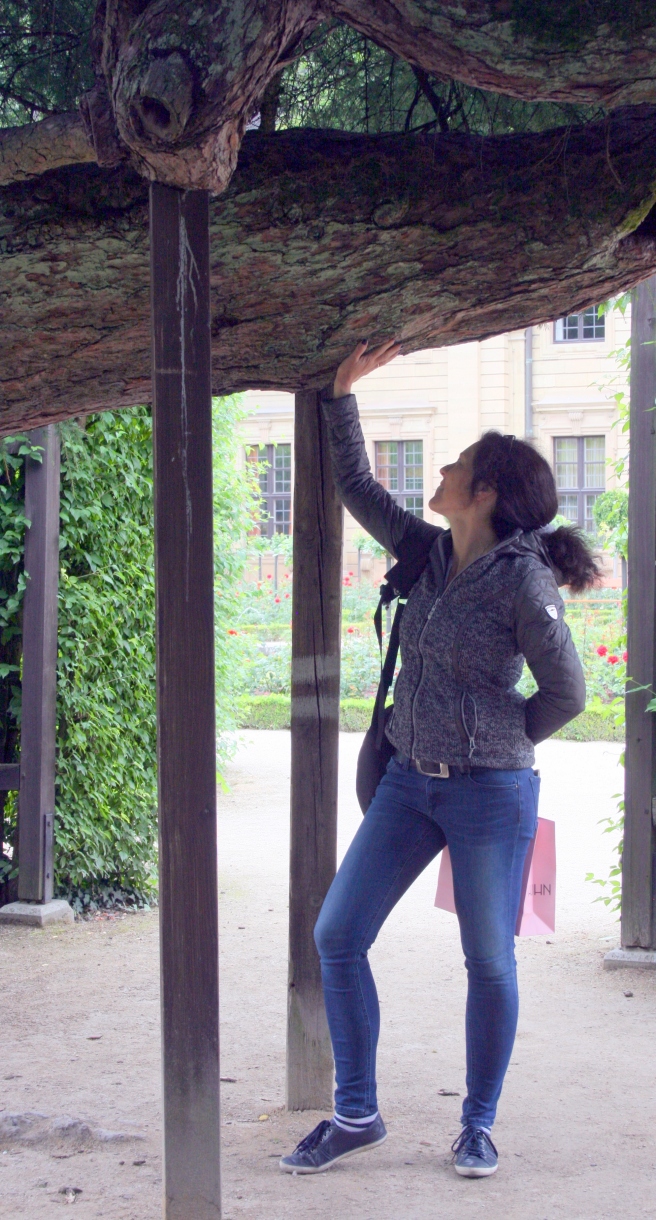

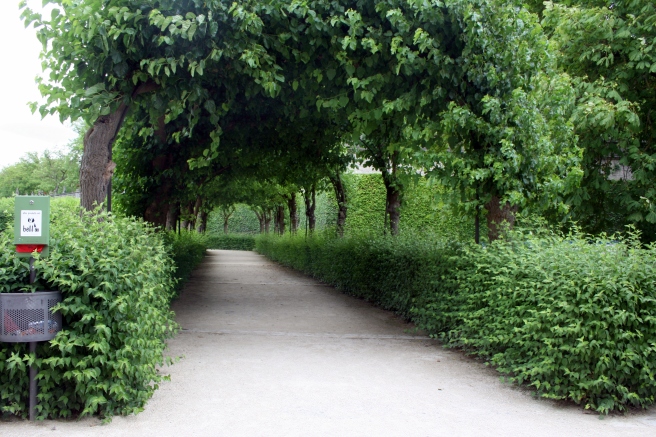
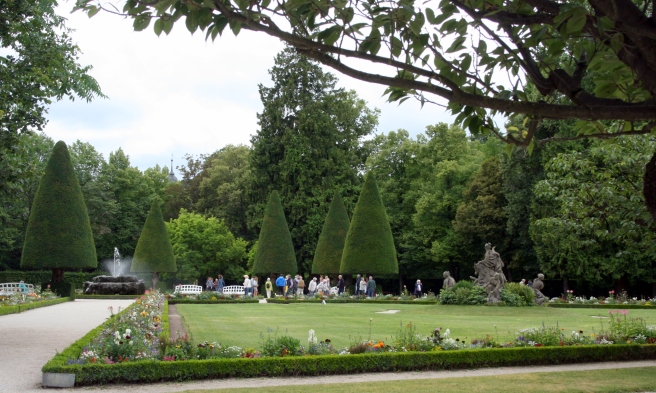
The gardens were a pleasure to walk around. Afternoon tea was next on the list.











